Air agency: Tacoma gas plant not a climate threat. Science: yes it is
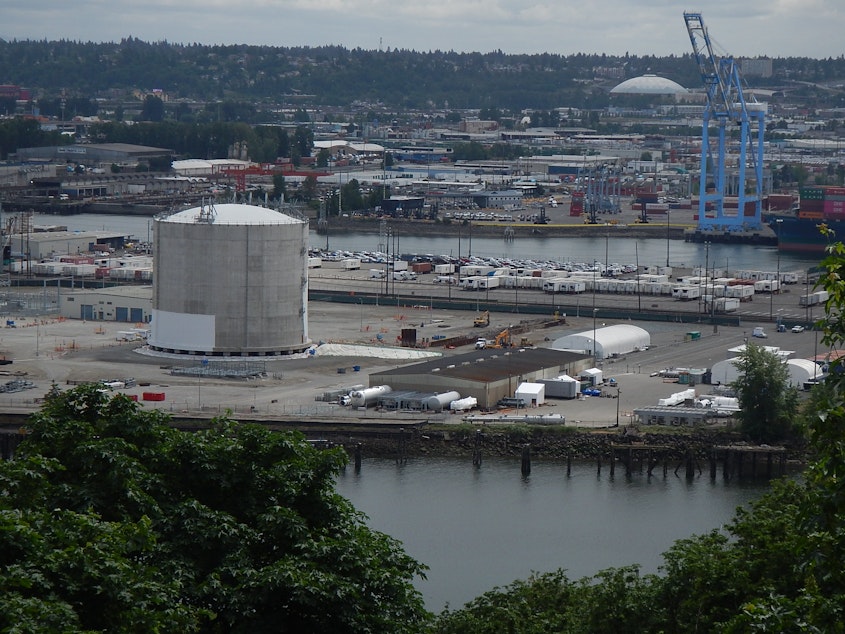
Environmentalists have soured on natural gas.
It used to be viewed as a promising step in the transition from dirtier fuels like coal and oil toward a climate-friendly future.
But as methods of producing the gas have changed and as scientists have zeroed in on the harm its main component, methane, does to the global climate, natural gas’s eco-friendly reputation has been snuffed out.
Many activists refuse to even call the substance found in the earth “natural” gas anymore, preferring to re-brand it “fracked” gas.
The shift has fueled clashes over energy projects around the world and on the Tacoma waterfront. Puget Sound Energy’s ongoing construction of a 14-story-tall tank for holding super-chilled gas there has drawn heated protests.
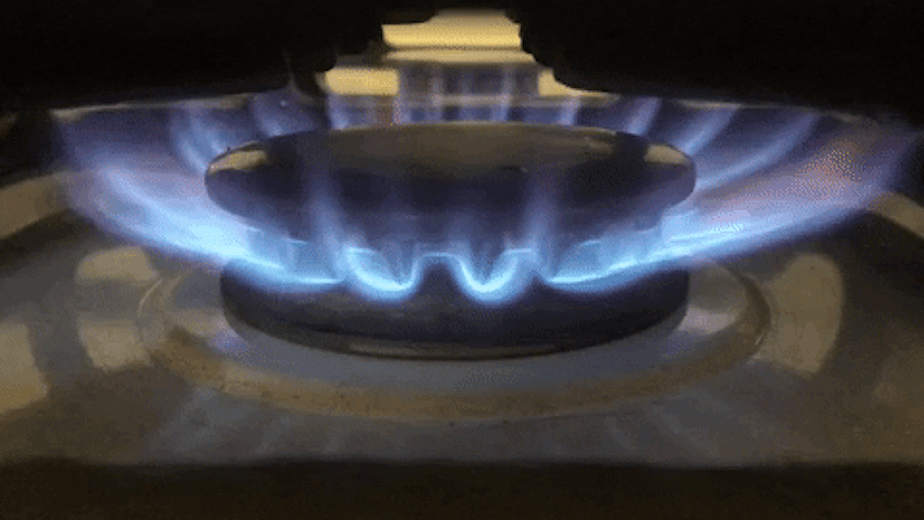
When you burn natural gas, the flame burns cleaner — putting out less smog-forming nitrogen oxides, less lung-damaging soot and less planet-heating carbon dioxide — than other fossil fuels.
That’s as true in your kitchen stove as it is in a power plant or cargo ship.
Sponsored
But what the gas does to the climate before it disappears in a blue flame is another story, which is where the giant white tank towering over the Tacoma waterfront comes in.
“You're looking at our LNG tank, which is an 8 million gallon, full-containment concrete tank,” project manager Jim Hogan with Puget Sound Energy said on a recent tour of the construction site.
Behind him stood the painted, nearly finished, cylinder of concrete and steel: essentially a giant thermos, but about as tall as the Tacoma Dome arena.
This industrial thermos can keep its liquid at -260 degrees Fahrenheit.
Sponsored
When natural gas is that cold, it takes up 600 times less space than at room temperature: like squeezing a beach ball down to the size of a ping pong ball.
The giant tank can also ride out an earthquake that would destroy most other infrastructure at the Port of Tacoma, according to Hogan, by sliding up to two feet in any direction on its supports.
“That's the most robust type of tank there is,” he said.
Hogan said frigid fuel could go inside the tank as soon as March 2021 and is less polluting than the petroleum it would replace.
“Methane is the cleanest burning fossil fuel,” he said.
Even so, tribes and green groups have been trying to stop the liquid natural gas plant for years, for both local and global reasons.
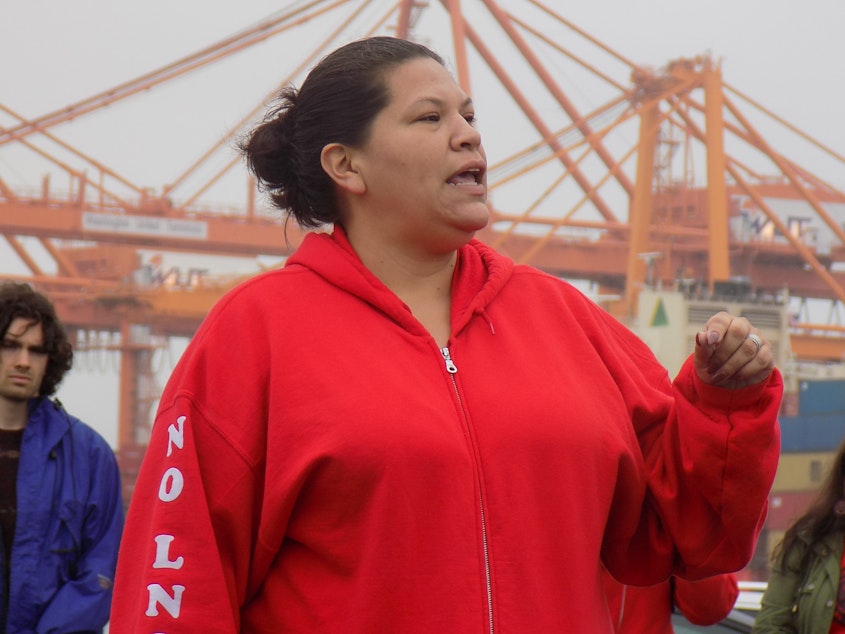
On Tuesday, Advocates for a Cleaner Tacoma and the Sierra Club sued the state for letting the $310 million project go forward without considering its impacts on the climate.
In May, tribal and environmental protesters blocked the gates of the construction site and, across the street, the gas plant’s anticipated main customer, Tote Maritime.
Sponsored
The Florida-based company plans to convert its Tacoma-to-Alaska cargo ships from low-sulfur diesel to liquefied natural gas. Tote also runs the world’s first two LNG-fueled container ships between Florida and Puerto Rico.
“For a large ship of that size, there really isn't any other option than fossil fuel to move a vessel like that,” Hogan said.
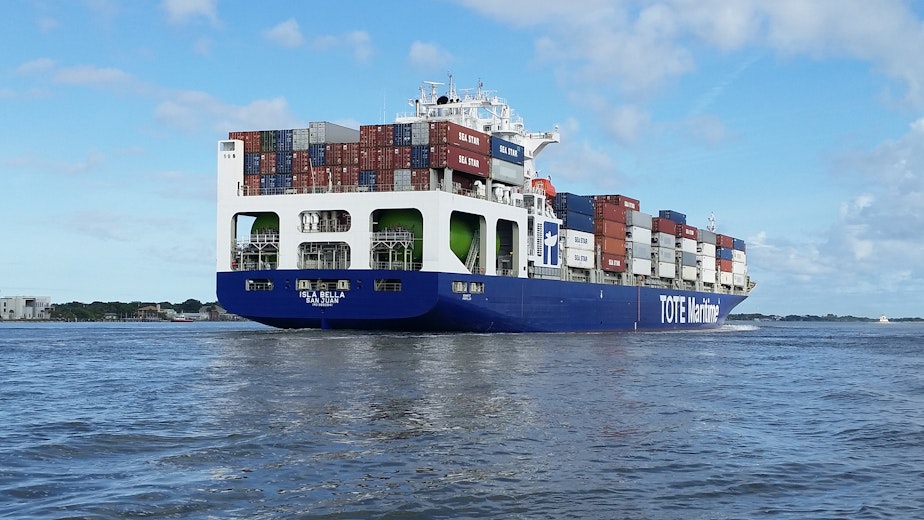
Sponsored
Members of the Puyallup Tribe led a ceremony to invite the companies to leave the tribe’s traditional territory, akin to the ritual of ushering visitors’ canoes away after a visit.
“The Puyallup Tribe has come out against the PSE LNG plant. We have advocated against it at all levels of government to government,” Puyallup Tribal Council member Anna Bean said after the ceremony in the parking lot of the tribe’s now-shuttered steamboat casino.
“We're doing our best to ensure that these types of projects aren't going to affect our future generations.”
The gas plant sits next to the Puyallup reservation, most of which is now owned by non-tribal members.
“It’s just like a big monster on our rez that we just don't want,” Puyallup activist Patricia Gonzalez said. “We don't have a plan B -- this is where we reside. This is where we've been since time immemorial.”
Sponsored
Activists contend that the giant fuel tank presents an explosion risk, threatens Puyallup treaty rights and is being built without proper permits or tribal consultation.
While those claims are contested, the plant would certainly add heat-trapping gases to the atmosphere.
“The greenhouse gases that it emits, it's worse than the fuels that they're already using and where we should be switching to renewable energy anyway,” Gonzalez said.
Climate researchers now say the world has to stop building any new fossil fuel plants and even figure out how to shutter some existing plants before their time. That is, if we want to avoid climate catastrophe.
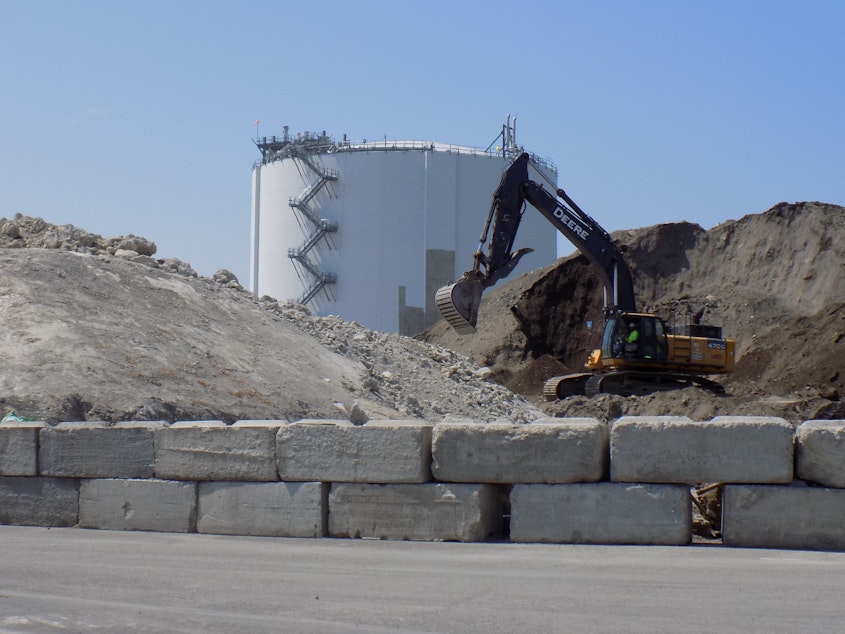
The half-built gas plant in Tacoma still needs the approval of the Puget Sound Clean Air Agency to finish construction.
The clean-air agency commissioned a cradle-to-grave assessment of the LNG plant’s air pollution impacts. It concluded that, by lowering ships’ diesel use, the plant will help lower local pollutants like soot and the global pollutants like carbon dioxide that are disrupting the climate.
But natural gas can harm the climate in ways that petroleum does not.
Natural gas is mostly methane, and in the atmosphere, methane is a potent climate disrupter.
“It traps a lot more heat than carbon dioxide does,” said activist Todd Hay with Advocates for a Cleaner Tacoma. (For his day job, Hay is a data scientist for the National Oceanographic and Atmospheric Administration.)
Hay figured out that the clean air agency’s justification for the gas plant relied on decade-old assumptions.
Depending how you measure it, methane is at least 30 times, and as much as 90 times, worse for the climate than carbon dioxide. But the clean air agency assumed it was only 25 times worse, relying on a United Nations science panel’s conclusions from 2007.
The agency’s finding that the Tacoma gas plant is a net benefit for the global climate hinges on that outdated assumption and others.
“We have much better available science now that shows that the potency of methane is much higher now,” Hay said. “Any leakage upstream starts nullifying the climate benefits of burning natural gas.”
When you take natural gas out of the ground, transport it or burn it, a little of it leaks. With such a powerful climate-wrecking substance, a little methane goes a long way.
Methane is invisible, but with infrared cameras, it’s possible to see the greenhouse gas puffing out of gas wells, pipes and tanks.
Studies in Canada, where almost all of Washington state’s natural gas comes from, have found that at least 2 times more methane leaks from gas wells and machinery than industry has estimated.
(Fun fact: Every month, on average, Washington state imports about enough natural gas from Canada to fill Lake Washington.)
In response to public criticism of its methane math, the Puget Sound Clean Air Agency’s consultant said it followed state and federal protocols in relying on the outdated information.
But buried 66 pages deep inside an appendix to a supplemental environmental impact statement is an admission from the agency: If its impact study had used the best science, it would have showed that building the Tacoma gas plant is slightly worse, not slightly better, for the climate than doing nothing.
The agency concluded that if it had used the latest science for its methane math, that would boost the plant’s greenhouse gas emissions by several thousand tons a year for the next 40 years. But that increase above the 1 million tons currently being emitted annually by Tote ships heading to Alaska would not cause “a significant adverse impact.”
The finding of no significant impact smooths the way for the gas project to win agency approval. A public hearing and other opportunities for public comment on the project remain but have not been scheduled.
Washington Gov. Jay Inslee announced his opposition to the project in May after supporting it previously. He said the science had changed.
“The age of consequences is upon us," Inslee said. "We have to act on clear science.”
While anti-gas activists celebrated the governor’s announcement, Inslee said his personal opposition would not alter the remaining regulatory hoops the half-finished plant must go through.
Inslee said he would convene agency heads to change how the state evaluates future projects to make sure it’s using the best available climate science.
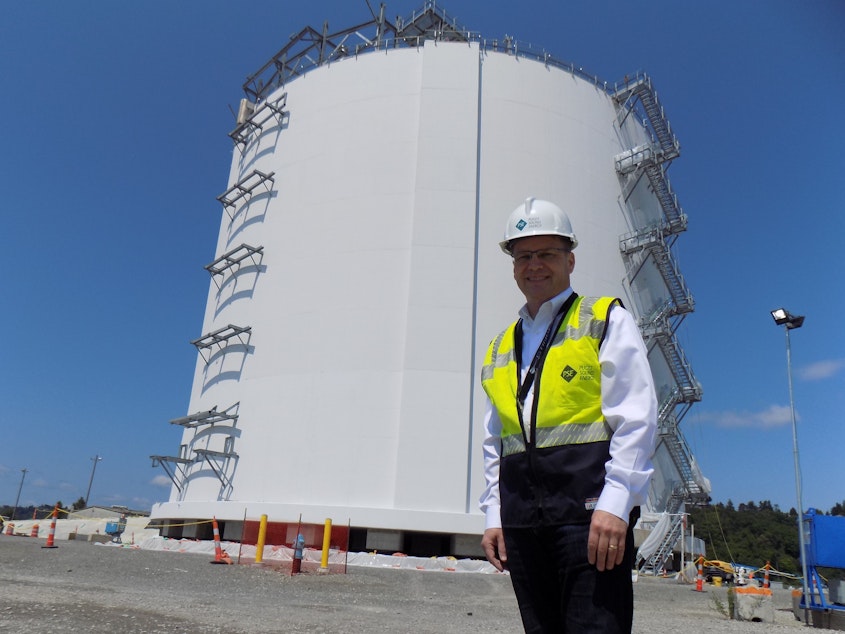
“I think the audience for the governor's remarks was in New Hampshire and in Iowa, not so much here,” Puget Sound Energy spokesperson Andy Wappler said. “It's more about his presidential campaign than his role as governor.”
“The biggest thing to me is if we don't do this, what do we do?” Wappler said. Some day, cleaner options for shipping will be available, Wappler said, but they’re not now. “This does change the fuel that shipping uses and helps our local air quality.”
Opponents say it makes no sense to build infrastructure that will last for decades and prolong or even worsen business-as-usual emissions along the way.
As increasingly dire reports from the world’s climate scientists have made clear, business as usual is a recipe for climate disaster.




